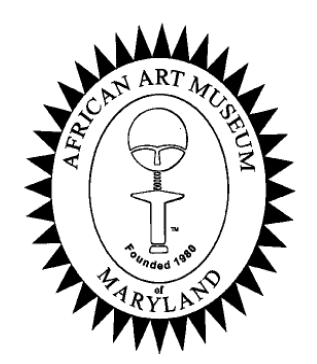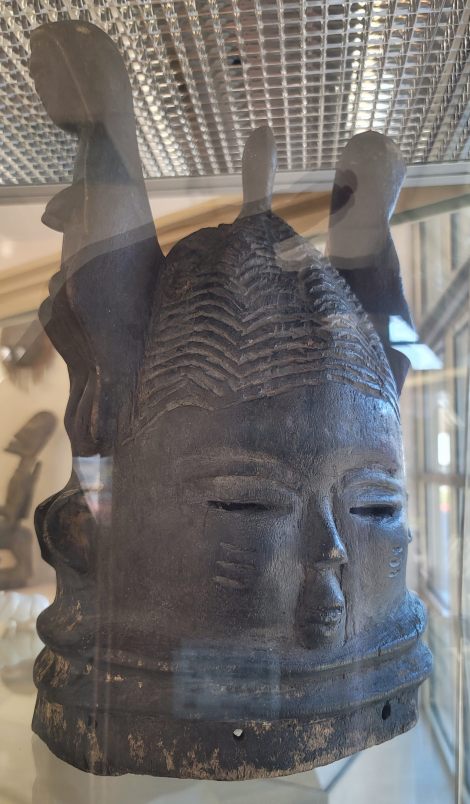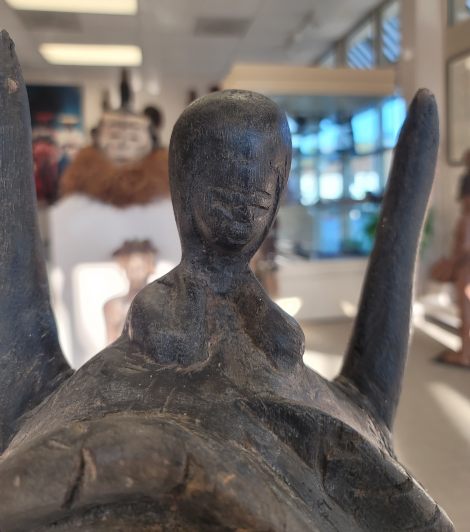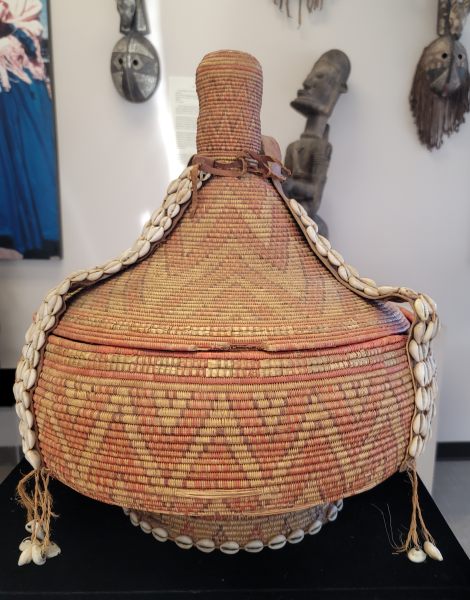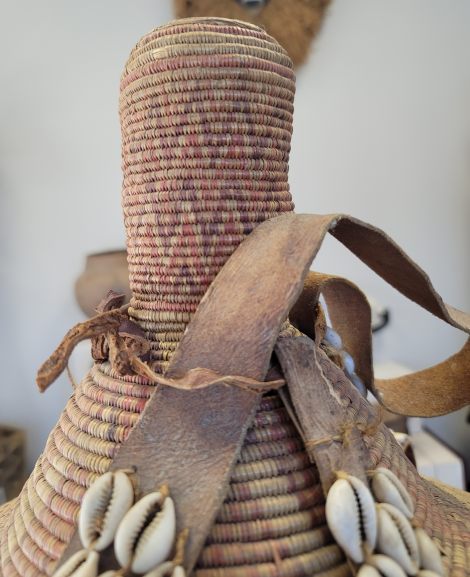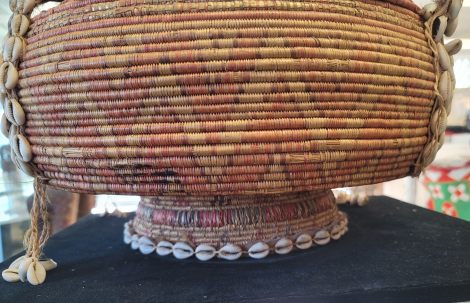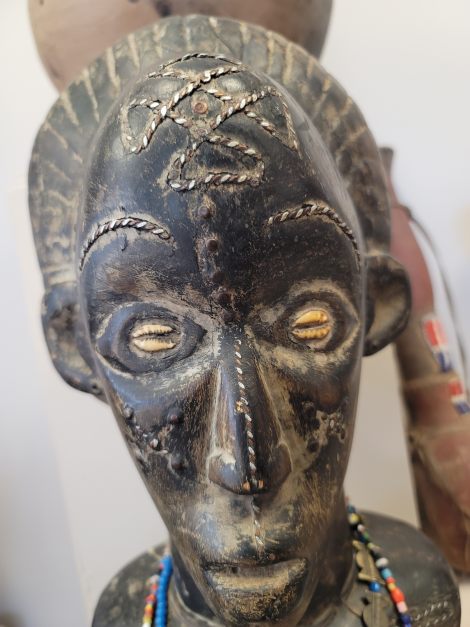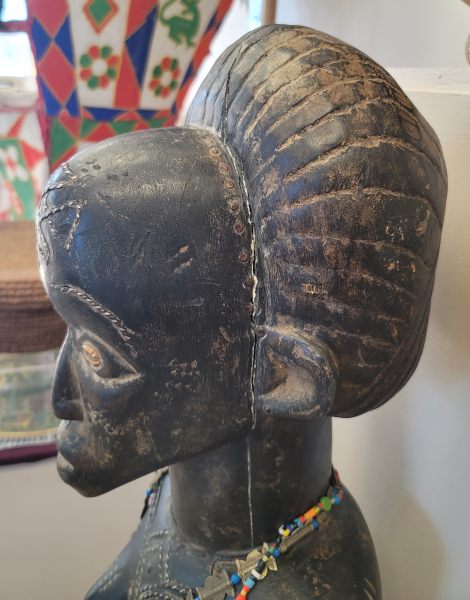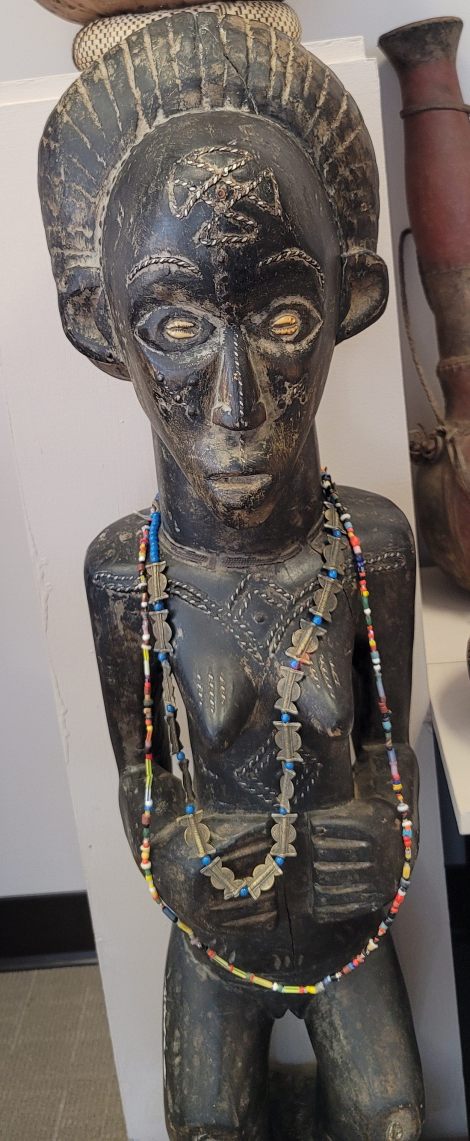AAMM Short Talks (Short T’s) – Archive
Welcome to AAMM’s new feature called AAMM Short Talks, or affectionately known as AAMM Short T’s. They are called ‘AAMM Short T’s’ because there will be audio of a story about each featured piece which will be 5 minutes or less! Each month we will feature three different pieces of African artifacts. These stories are narrated by the museum co-founder, Mrs. Doris Ligon. We will also include a text file in case you prefer to read the text.
Drop us a line sometimes and let us know what you think. Did you miss our previous Short T’s? Don’t worry – Check out the Short T’s Archive!
Name: Bundu Society Mask
Country: Liberia / Sierra Leone
Donors: Ben & Shirley Vonderheide
Listen to "Bundu Society Mask" Short Talk
Read the transcribed text for "Bundu Society Mask" audio.
When anybody talks about the traditional arts of Africa, that they’ve been to Africa and they picked up a mask, it’s normally not one of the kind that you’re looking at now. Because that is a mask that is out of the ordinary in a lot of respects. For the most part, men wear masks. There’s only one mask that I know anything about and I’m not an expert at this. But I’ve been studying African art for a long time but that doesn’t mean that they’re not some masks that I’ve missed. Is that Bundu society mask, is that mask that comes from the area of Sierra Leone, and Liberia? That I have found, is the only kind of mask that women wear. Now it’s made of wood, it looks massive and looks heavy, but it’s made of relatively lightweight wood. It sits right on top of your head and it normally depicts something, an idea of strength or longevity on it. It’s placed right on the top of your head.
At the base of that part that sits on top of your head, are holes from which you will tie materials, so that you will not be able to see the person who’s wearing the mask. So it’s not a mask that’s going to cover your face but what you will apply to it will somewhat obscure your face. Because again, the same as when the men wear the mask, you’re not supposed to know who is wearing the mask. That is her badge of honor, that gives her the power. Now, when she’s wearing the mask it is going to be at initiation periods when young girls are coming into their own or they are at a time when the older members of that society want to teach the young lady how to be a good citizen, then the mask is worn. That mask is not worn on a day time basis or date event basis where you just decided to put on a mask and you go walking around. It’s for a special occasion. And most of those special occasions are talking about the initiation or you’re coming of age. So it’s a mask that is going to sit on top of your head.
Sometimes it’s called a helmet mask. At the base of that helmet mask you’re going to tie things because there are little holes there that will somewhat obscure your face, because of the importance of your not caring who is wearing the mask. But knowing that the woman who has that mask at the top of her head is somebody very special and somebody who has the power to wear that mask.
Transcribed by https://otter.ai
Name: The Basket
Country:
Donor: Ms. Mildred G. Rosen
Listen to 'The Basket' Short Talk
Read the transcribed text for "The Basket" audio.
This basket has a special meaning for me because it comes from the collection of Ms. Mildred G. Rosen and it was brought to the museum by Ms. Rosen’s granddaughter, along with some other objects. Ms. Rosen’s granddaughter said that her grandmother said these objects are to go only to the African Art Museum Of Maryland. So evidently, somewhere along the way, Ms. Rosen and I had had a conversation. I really value that somebody in the community is saying “These are especially for the African Art Museum Of Maryland”. It is an unrestricted gift but it is a gift that can tell you a whole lot about the people who made it. I’m not sure of the origin of the location of where the basket was made. I can tell you that it’s a special family that made this basket because like anything in the world, when something is created, that is designed to hold objects or to store objects, how you embellish, it has a lot to do with the available monies in your household.
If you just want something to put away, you can choose a box. Or if you have baskets, you’ll just choose a basket and put it in the basket. But the more you decorate it, like anything else, the more you see that people have the time, they have the wherewithall, it means they have money. That means they have the talent to give something special to this basket. Now the basket did not have to have these cowrie shells on it. But the cowrie shells were used sometimes for money. So here is this basket, which is a good sized basket and it’s out of the ordinary shape. It has these cowrie shells, all over it, embellishing the design of the basket, and the shape of the basket, what the basket can hold. But if you stop thinking about Africa for a moment, anyplace in the world, I believe, that a person may be carrying a purse, the more glamorous that purse, the more you think that that person is, someone out of the ordinary. That doesn’t have to be restricted to any particular location. That’s all over the world. All over the world if you wanted to store something, you could put it in a box and put it away, that’s all over the world. The more you do to that object that is storing your objects, the more you think that person has the time, has the wherewithall, has the talent to address it, and then has the money or the monetary capabilities. So here is this basket that is adorned with cowrie shells and as I said, because they used to be used for money. This has come from a household that is reflective of people of means.
Transcribed by https://otter.ai
Name: Chokwe Ancestrial Figure
Country: Democratic Republic of Congo (DRC)
Donors: N/A
Listen to 'Chokwe Ancestrial Figure' Short Talk
Read the transcribed text for 'Chokwe Ancestrial Figure' audio.
This is a Chokwe ancestral figure. The Chokwe people are primarily in the Democratic Republic of Congo, that used to be Zaire. It used to be the Belgian Congo and it's a huge country. It is the Democratic Republic sometimes referred to as DRC. The ancestrial figure has been misunderstood primarily by people outside of the African continent. The ancestral figure is seen as a conduit, because this figure represents the spirit of people who have gone on before you. People who have gone on before you are closer to the Supreme Being than are you. So if you have a message that you'd like to give to the Supreme Being, you will come and kneel sometimes, or just sit at the foot of the ancestral figure. Sometimes you will bring food or some kind of foodstuffs, and you will place it at the foot of this, it used to be traditional, you would place it at the foot of this figure. Not that this figure is going to develop ........consume it, but an animal will come by, it's a sacrifice.
You're sacrificing something, you're giving up something in order to, quote unquote, pay for your message being sent to the Supreme Being. So you come and you talk to this ancestral figure. And you hope that this ancestral figure will take your message as a conduit up to the Supreme Being. So when you see somebody talking to or just interacting with an ancestral figure, it is not ancestor worship, it is ancestor respect. It is paying the respect to the people who have come before you, and who has made a way for you to be what you are and to progress to be what you are. You make a way for somebody else, but you give respect to that person who has made that way for you, who as the person who has come before you, as your ancestor. That is what this figure represents.
Normally the traditional arts of Africa, the figures are shown without attitude without smiling, without frowning, almost looking into the distance, it almost seems looking beyond you. Represented in this figure is the spirit and the power and the strength of the people who have made a way for you to be what you are today. To go on to be greater and perhaps more influential, and making a way for people coming after you that was provided by the ancestor figures. So the ancestor figure is the recipient of your respect and the foodstuffs that you leave there, is a sacrifice is the price that you pay for the service that they give you.
Transcribed by https://otter.ai
